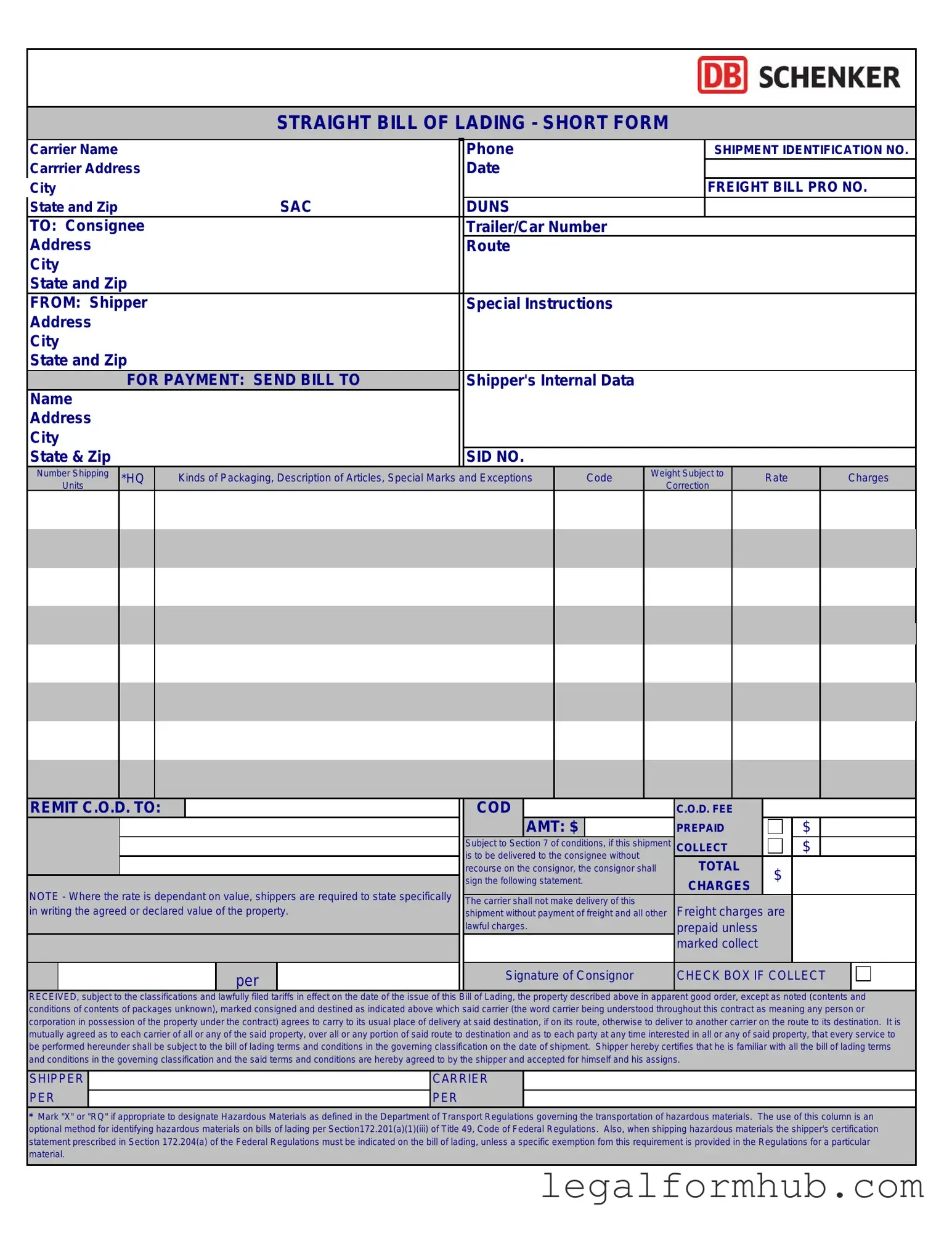The Straight Bill of Lading is similar to the Uniform Commercial Code (UCC) Bill of Lading. Both documents serve as evidence of a contract for the transportation of goods. They outline the responsibilities of the carrier and the shipper, ensuring that both parties understand their obligations. The UCC Bill of Lading is often used in commercial transactions, providing a legal framework that governs sales and leases of goods, while the Straight Bill of Lading focuses specifically on the transportation aspect.
An additional document that resembles the Straight Bill of Lading is the Order Bill of Lading. This document allows the transfer of ownership of goods during transit. Unlike the Straight Bill, which is non-negotiable and specifies a named consignee, the Order Bill can be endorsed and transferred to others, making it more flexible for trade purposes.
The Air Waybill is another document similar to the Straight Bill of Lading. Used in air freight, the Air Waybill serves as a receipt for goods and a contract for carriage. While both documents confirm the shipment of goods, the Air Waybill is specifically designed for air transport, streamlining the process for airlines and shippers alike.
For a smooth transaction, consider the "convenient Mobile Home Bill of Sale template" to ensure that all necessary details are accurately documented during the sale of your mobile home. You can find out more about it here.
The Sea Waybill also shares similarities with the Straight Bill of Lading. This document is used for the transportation of goods by sea and serves as a receipt and a contract. Like the Straight Bill, the Sea Waybill is typically non-negotiable, meaning it cannot be transferred to another party. This makes it easier to handle shipments where ownership transfer is not required.
The Freight Bill is another document closely related to the Straight Bill of Lading. It outlines the charges for transportation services and is issued by the carrier. While the Straight Bill serves as a receipt for the shipment, the Freight Bill details the cost associated with moving those goods. Both documents are essential for tracking shipments and managing logistics.
The Warehouse Receipt is similar in function to the Straight Bill of Lading. It serves as a document of title for goods stored in a warehouse. Like the Straight Bill, it provides proof of ownership and can be used to claim the goods. However, the Warehouse Receipt focuses on storage rather than transportation, making it a key document in inventory management.
The Delivery Order is another document that resembles the Straight Bill of Lading. It instructs a carrier or warehouse to release goods to a specific party. While the Straight Bill is primarily used during transport, the Delivery Order is often issued after the goods have arrived at their destination, facilitating the final transfer of ownership.
The Packing List also shares some similarities with the Straight Bill of Lading. It details the contents of a shipment, including descriptions, quantities, and weights. While the Straight Bill serves as a contract and receipt, the Packing List provides essential information for both the shipper and the consignee, ensuring that the correct items are delivered.
The Export Declaration is another document that relates to the Straight Bill of Lading. It is required for shipments leaving the country and provides information about the goods being exported. While the Straight Bill confirms the shipment, the Export Declaration ensures compliance with international trade regulations, making it a critical component of the shipping process.
Lastly, the Consignment Note is similar to the Straight Bill of Lading in that it serves as a receipt for goods being transported. It is often used in the context of road transport and provides details about the shipment. While both documents confirm the transfer of goods, the Consignment Note is generally more informal and used for less complex shipments.
